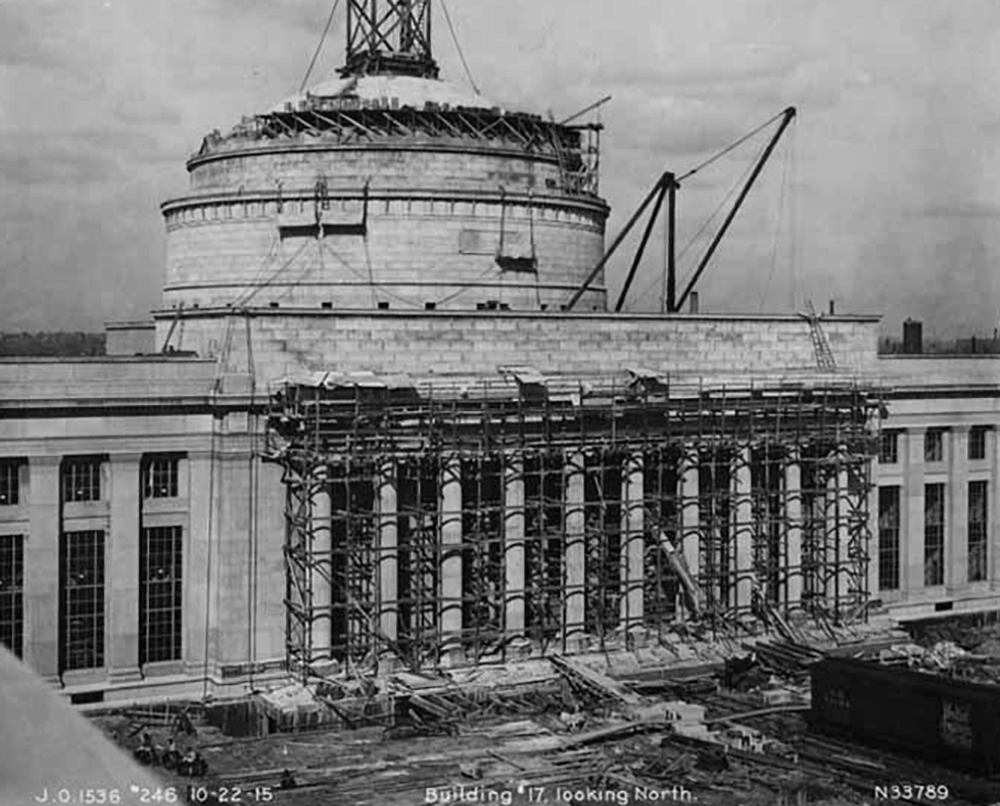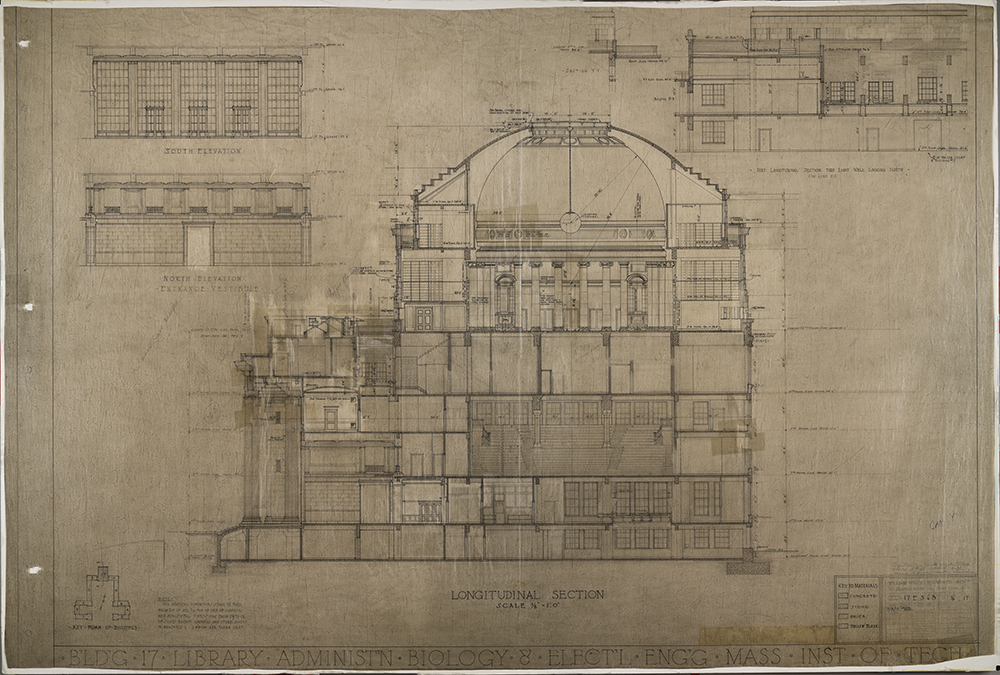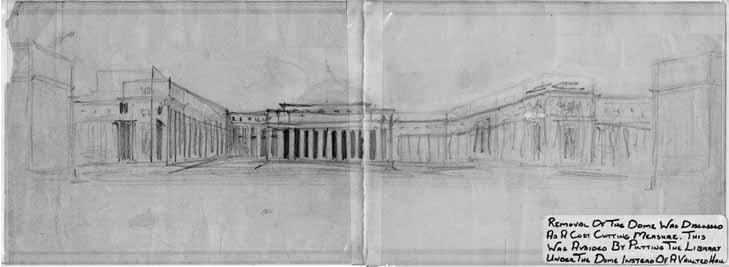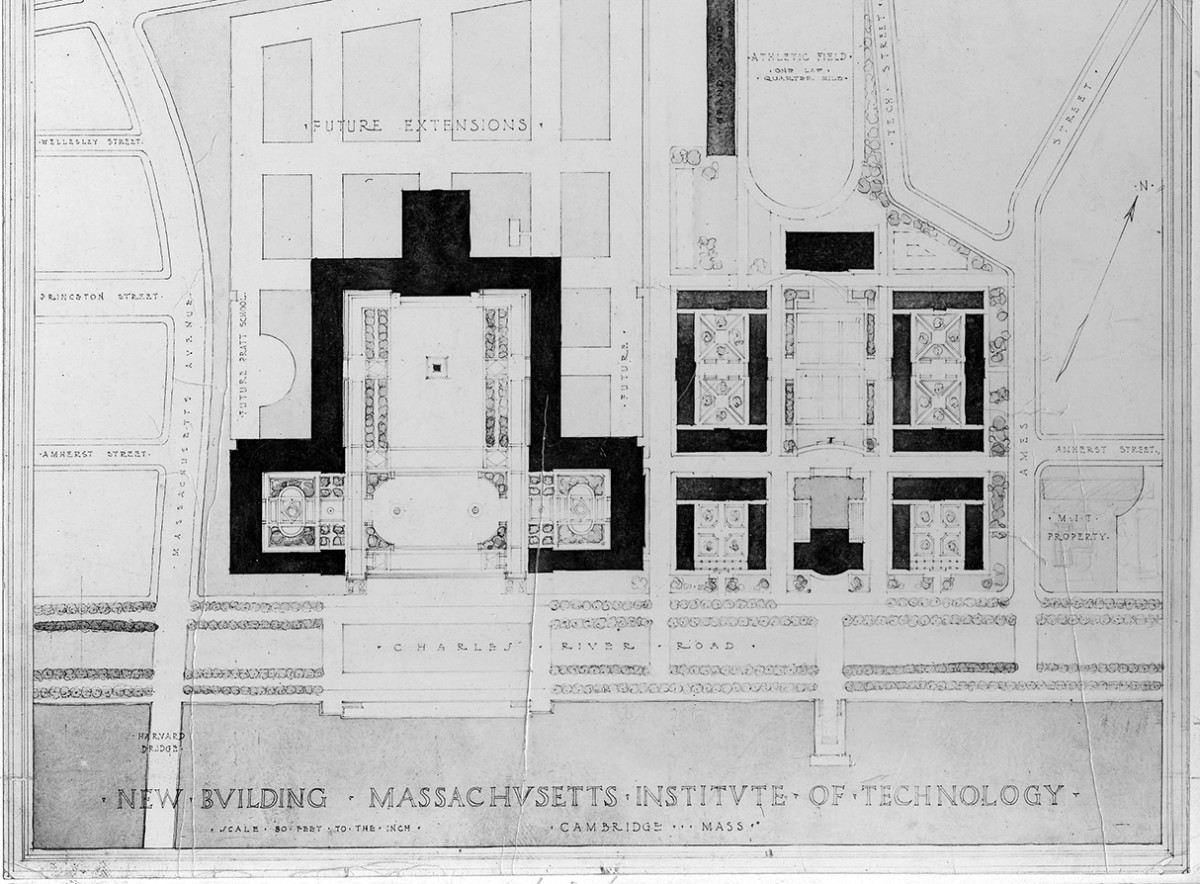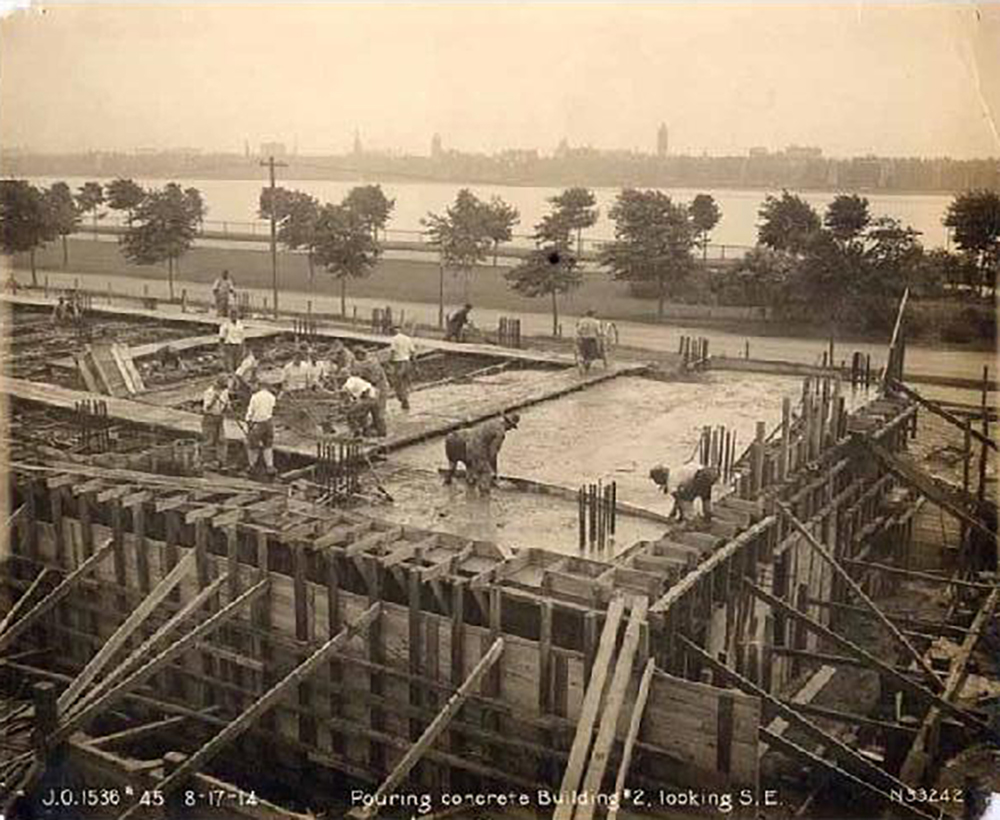MIT Museum Exhibition Highlights What Was New About the New Tech
You have probably stared at a blank screen, a white canvas or an empty stage and felt some mixture of anxiety and exhilaration over the prospect of beginning a new project. Now, imagine if the tabula rasa you face is a fifty-acre tract of land along the Charles River, the site of a new campus. “As you think about starting something new, and you have that blank slate, what do you do?,” asks Deborah Douglas, Director of Collections and Curator, Science & Technology, MIT Museum.
Imagining New Technology: Building MIT in Cambridge, an exhibition at the MIT Museum which Douglas curated, lays bare the logic in the creative process—from identifying a need to proposing a solution to formulating a plan and executing it. Beyond celebrating an historical event—the building of the MIT Cambridge campus in 1916—this exhibition also provides a case study for the creative acts of designing, building and urban planning. On view are rarely seen photographs, correspondence, watercolors, drawings, maps and ephemera related to the building of the Cambridge campus, the moving day celebrations in 1916 and Kendall Square’s industrial past.
William Bosworth, the architect for the main campus group, was himself a graduate of the MIT Architecture program in 1889, before attending the Ecolé des Beaux Arts in Paris in 1896. His classical training is evident in his sensitively rendered watercolors and architectural drawings, as it is in his buildings. Bosworth’s majestic centerpiece of the campus, the Great Dome, modeled on that of the Pantheon in Rome (as well as the domes of Columbia University and the University of Virginia), figures prominently within the exhibition in drawings and construction photographs.
However, Douglas points out, Bosworth’s facades belie a forward-thinking steel and concrete structure, designed in collaboration with the engineer John Ripley Freeman and Charles Stone of the engineering firm Stone & Webster. “I think one of the most interesting parts of this exhibit is one of the more subtle points. There is a great deal of focus on this external Beaux Arts facade and the Great Dome. Yet, skin that away, take away the limestone bricks, take away the dome, and if you look at the structure, it’s unbelievably modern. This is not a conservative artifact in any way, shape or form,” says Douglas, admiring one of Stone & Webster’s engineering drawings on display. “When people walk into the MIT.nano lab in a couple years,” Douglas continues, “… the sensations they will have about new and modern materials will be similar to what people were feeling when they saw this concrete. It [reinforced concrete] just wasn’t a common building material; it was new. It symbolized cutting edge science and technology at that point in history. This picture is particularly telling because the endurance of the Institute is less about its external symbols and more about how the building has functioned for a century.”
Ann Neumann, Director of Galleries and Exhibitions, MIT Museum, adds, “There is this incredible, bare workmanlike structure at the bones of this campus that allows collaboration and creation. It’s a place where you feel you can roughly reconfigure the environments to your path and your destiny. You have the raw materials.” Stone and Webster’s flexible interiors helped embed the ideas of cross-disciplinarity and collaboration into the MIT campus from the start. While Bosworth designed the ceremonial spaces, the grand lobbies and Barker Library, Stone & Webster designed the overwhelming majority of the interior spaces including laboratory benches, the cabinetry, the equipment and the overall layout. Douglas says one of the goals of the exhibition is “to elevate Stone & Webster from merely being indentified as the builders to being seen as very much part of the creative force” behind the new campus.
After a chronological sweep through the planning and construction of the New Technology, the exhibition shifts focus to the moving day festivities. Included are images of the fanciful Bucentaur that ferried MIT officials across the Charles River in a pageant to mark the occasion. This elaborately decorated barge designed by MIT professor Ralph Adams Cram was modeled on a Venetian doge’s barge and ornamented with mermaids, cupids, a beaver and the figure of Technology holding a T-square and a torch of enlightenment. Other photographs document the famous telephone banquet in Symphony Hall, which used the then-novel technology to link 34 locations and thousands of alumni for a celebratory group conversation. Such notable figures as Thomas Alva Edison, Alexander Graham Bell and Orville Wright phoned in to this fundraising event to offer their congratulations. But the story does not end with how the move to Cambridge affected MIT students and faculty.
The exhibition also addresses the larger, more complicated history of MIT’s impact on the Cambridge community, in particular its effects on the manufacturing district around Kendall Square. The 1916-17 course catalog tells us that MIT viewed “the location of the Institute in proximity to the great collections and libraries of Boston and Cambridge, and in the neighborhood of a great manufacturing district, with which the Institute maintains close relations,” as a “great advantage to technological students.” Video interviews with local residents, which speak to this town and gown relationship, are included in the exhibition. Neumann notes, “We built the voice of Cambridge residents into the story because the dynamic of MIT helped shape this post-industrial landscape and the shared local economy. We wanted to acknowledge that our growth has affected the community.”
The 1916 Bromley map of Cambridge and other artifacts show the history of such local industries as NECCO and Polaroid, as well as the stories of more recent neighbors in the biotech industry. Some of the exhibition programming also investigates the civic dimension to campus planning. In one interactive display, visitors are invited to construct a model of the MIT campus by 3-D printing individual buildings—a physical reminder that everyone in the Cambridge community can partake in MIT’s future.
Imagining New Technology: Building MIT in Cambridge is on view at the MIT Museum through Sept. 6, 2016.

